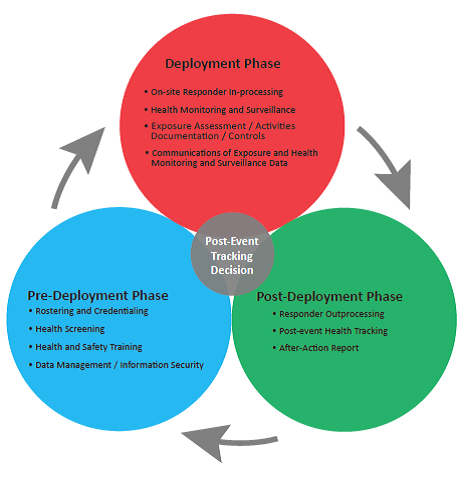Protecting Emergency Responders
Posted on by
 When disaster strikes, the nation depends on emergency response workers who are prepared and trained to respond effectively. This need is particularly clear as we observe the anniversary of the attacks of September 11, 2001, and honor the responders who performed heroic service during that somber time. Response work can range from well-contained, localized efforts to massive, diffuse mobilizations and involves a broad array of activities including search, rescue, investigations, assessment, recovery, cleanup, and restoration. Such work is carried out by individuals from emergency management, fire services, law enforcement, emergency medical services, public health, construction and other skilled support, disaster relief, mental health, and volunteer organizations.
When disaster strikes, the nation depends on emergency response workers who are prepared and trained to respond effectively. This need is particularly clear as we observe the anniversary of the attacks of September 11, 2001, and honor the responders who performed heroic service during that somber time. Response work can range from well-contained, localized efforts to massive, diffuse mobilizations and involves a broad array of activities including search, rescue, investigations, assessment, recovery, cleanup, and restoration. Such work is carried out by individuals from emergency management, fire services, law enforcement, emergency medical services, public health, construction and other skilled support, disaster relief, mental health, and volunteer organizations.
To ensure that workers can meet the challenges of disasters, every effort must be made to protect emergency workers from the safety and health risks inherent in the work. A new National Response Team technical assistance document, “Emergency Responder Health Monitoring and Surveillance” is now available which provides a recommended health monitoring and surveillance system. The Emergency Responder Health Monitoring and Surveillance system includes specific recommendations and tools for all phases of a response, including the pre-deployment, deployment, and post-deployment phase (see Figure 1). The intent of medical monitoring and surveillance is to identify exposures and/or signs and symptoms early in the course of an emergency response. Early detection can prevent or mitigate adverse physical and psychological outcomes; helping to ensure that workers and volunteers are not harmed in the course of their response and are able to maintain their ability to respond effectively.

This document was prepared by an interagency work group consisting of representatives of federal, state, and local government agencies as well as volunteer agencies. The work group was organized and facilitated by NIOSH and coordinated with the National Response Team.
This document describes a comprehensive approach to address a variety of public health measures including:
- medical screening that focuses on assessment of fitness and ability to safely and effectively deploy on a response,
- training regarding hazards to be anticipated and protective measures to mitigate them,
- approaches to centralized tracking or rostering of responders,
- surveillance and monitoring for exposures and adverse health effects, including supporting efforts in environmental monitoring and assessment,
- out-processing assessments on completion of response duties and deployments, and
- follow-up or long-term surveillance or monitoring for potential delayed or long-term adverse effects of the deployment experience.
The document also includes guidelines or recommendations for procedures to implement these protections that are fully compatible within the Incident Command System or National Incident Management System structures. These guidelines, have been adopted as the accepted standard organizational focus for emergency response at all levels and for all incident sizes and types. A companion document entitled: “Emergency Responder Health Monitoring and Surveillance (ERHMS): A Guide for Key Decision Makers” was developed to summarize key components.
These guidelines provide vital resources for protecting our emergency responders. We would like to hear from you. What is the best way to prepare and train emergency response agencies, incident commanders, and state-level epidemiologists on the Emergency Responder Health Monitoring and Surveillance system components for protecting responders?
Jim Spahr, MPH
CAPT Spahr is the Associate Director of the NIOSH Office for Emergency Preparedness & Response.
For more information visit the NIOSH ERHMS topic page.
One comment on “Protecting Emergency Responders”
Comments listed below are posted by individuals not associated with CDC, unless otherwise stated. These comments do not represent the official views of CDC, and CDC does not guarantee that any information posted by individuals on this site is correct, and disclaims any liability for any loss or damage resulting from reliance on any such information. Read more about our comment policy ».


destroy terrorism is important, but ensuring the safety of people is more important than.